- April 6, 2013
- Posted by:
- Category:Annual Forecast, BLOG
In line with tradition, IAIP organized its Annual Forecast Event for the fifth time in a row at the iconic International Convention Hall at BSE on April 2nd 2013. The event was well attended by both IAIP members and non-members. The proceedings started off with a welcome speech by Sunil Singhania CFA, President IAIP and followed by an address from V Balasubramaniam, Chief Business Officer BSE. Balasubramaniam gave a brief on the transformational changes that BSE has done over the past few months. BSE has tied up the S&P for up gradation of the value delivered to the investors and other market participants. With technology leapfrogging, BSE has installed user-friendly systems and now is witnessing increasing derivative volumes. Anil Ghelani CFA, Chair Programming, CE and Networking, IAIP, then introduced each of the panelists and invited them to take their seats on the podium. This included Neelkanth Mishra, Nilesh Shah, Prasun Gajri, and Sajjid Chinoy. Just before the panel discussion, Jayesh Gandhi, CFA, Director, IAIP ran through the findings of the recently concluded Annual Forecast Survey for FY14. Anil then announced the names of the winners who correctly predicted the levels of Sensex, 10 year G-Sec yield, Gold, Brent, & Rupee/USD as on the close of FY13 a year back. A token of appreciation was presented to these winners by the panelists. This was followed by panel discussion moderated by Nikunj Dalmia, Stock Editor, ET Now, one of the leading business news channels in the country. Covering a range of topics from government policies to foreign institutional investors fund flows to attractiveness of asset classes, sectors within equities to invest in; he engaged the audience and kept the discussion peppy and lively. The event closed with the vote of thanks by Amit Khurana CFA, Director IAIP.
Following are the excerpts of the panel discussion which were also broadcasted on ET Now.
Neelkanth Mishra, Director, India Equity Strategy, Credit Suisse
Although optimism and fund flow did help the markets remain buoyant last year, Neelkanth was of the view that the real economy had slowed down significantly as very little investments were happening. Between SME’s, mid-level and top level corporates, he believed SMEs were not reinvesting their profits back into their businesses despite running at high capacity utilization levels. On the other hand Mid Level corporates, he felt, seemed to have thrown in the towel and were waiting to reap rewards for all past investments stuck on account of regulatory hurdles, while Top corporates were focusing on investments abroad. While the investment cycle has clearly slowed down, he still believed that the future looked bright. Having travelled and personally visited rural parts of India, he was of the view that on ground situation in rural India had changed for the better. Thus he believed stocks focused on servicing the bottom of the pyramid could turn out to be quality multi year bets. Neelkanth believed that the Sensex could end next year at a level of 21500.
Nilesh Shah, President, Corporate Banking, Axis Bank
The problems ailing India and solutions to those problems were common knowledge to most policy makers yet these policy makers had not conjured enough political will to solve them. Investment cycle has come to a standstill since promoters are not willing to invest in equity of their companies and debt funded investments have also stopped after continuing for a while. Markets have become more polarized than ever as quality stocks displaying good corporate governance, having a reasonable growth rate and generating free cash flows were garnering a major chunk of foreign and domestic fund flow and thus were trading at very high P/E ratios. Even if these quality stocks do not witness an inherent price correction, they were likely to go through value and time correction and thus would underperform the markets. Extreme amount of pessimism is already priced in the markets hence macros & earnings can surprise on the positive side going forward. Consumer stocks would underperform due to fading wealth effect and rupee would depreciate due to higher CAD boosting the prospects of the export related businesses. But he cautioned that worst is not yet over and high yielding debt investments will outperform equities on risk adjusted basis along with mid-caps outperforming the large caps. Next year could witness slight improvement in GDP Growth rates as pre election spending could help spur it. Overall earnings growth could be in around 14%.
Prasun Gajri, Chief Investment Officer, HDFC Life
Domestic retail investors had given a major thumbs down to the equity markets as a result of which domestic MFs and insurance companies were witnessing major redemptions. He believes that there were plenty of quality stocks outside of the selected large caps which were still being ignored by the market. This is because of tendency of FII’s, ETF’s and other institutional investors to concentrate only on index and large cap stocks. The general direction in which the economy and markets were headed was positive and politics is unlikely to play a spoil sport apart from the timing of election which trigger volatility. Prasun is of the view that this was not the time to remain despondent as there were plenty of triggers for the markets to do well, easing of the interest rates being one of them. He also believed that GST could be one of the major game changers to look out for in the coming year. He is positive on Technology, Auto component and Pharmaceutical stocks.
Sajjid Chinoy, Executive Director, South Asia Economist, JP Morgan
Sajjid has no doubts that Indian economy is bottoming out but doubted the pace of acceleration. He opined that India clocked 8.2% to 9.6% GDP growth in FY09 & FY10 respectively on account of major fiscal stimulus provided by the government and hence austerity and GDP expansion cannot happen at the same time. The government was running a high fiscal deficit even during that time when ideally it should have tightened its belt for tough times ahead. The price of these past excesses was being paid today as government has been forced to embark on major austerity measures like deep cut in planned expenditures to contain fiscal deficit. The primary concern is that the Current Account Deficit (CAD) is being funded through hot money in the form ETF’s and loans which will put pressure on the rupee again when the repatriation of this money along with the profits/interest begins. He did not believe that the RBI would go on cutting rates as that could lead to an immediate pickup in consumer demand which if fuelled without appropriate investments & capacity additions would once again result in high inflation. He also did not believe that high interest rates were the sole reason for slowdown in investments. He felt factors such as land acquisition, environmental clearance, coal shortage had played a significant role in slowing down the investment cycle. Overall Sajjid expected GDP growth to hover between 5.75-5.8% and CAD to be at 4.5% of GDP.
Contribution from: Sitaraman Iyer and Kunal Sabnis, CFA, both IAIP Volunteer
Photographs from: Santosh Samal










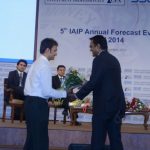


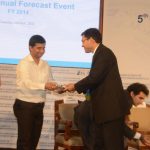



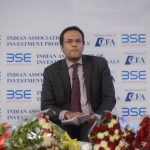
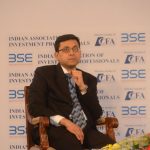
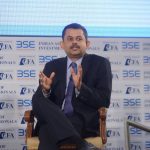


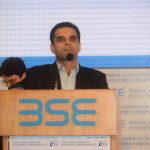



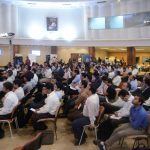


Very insightful discussion – thanks for this update – all the best to all for the forthcoming Fiscal Year 2014!!